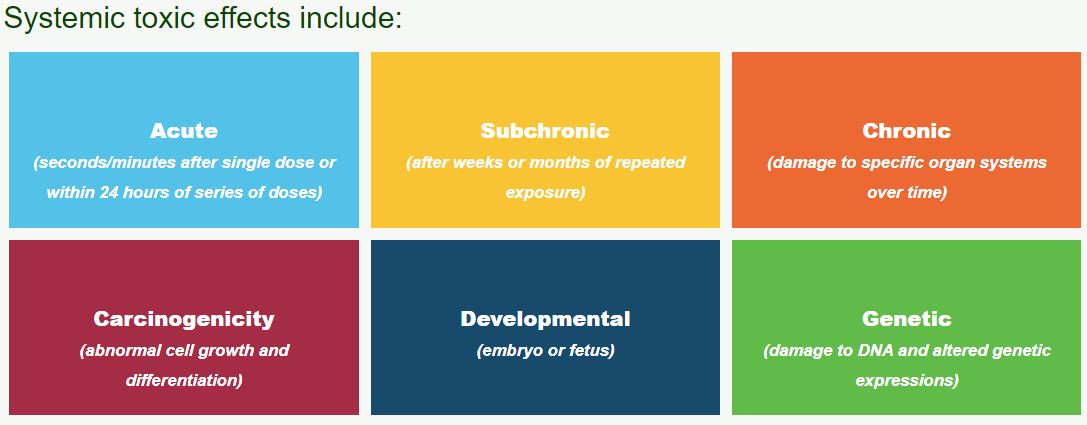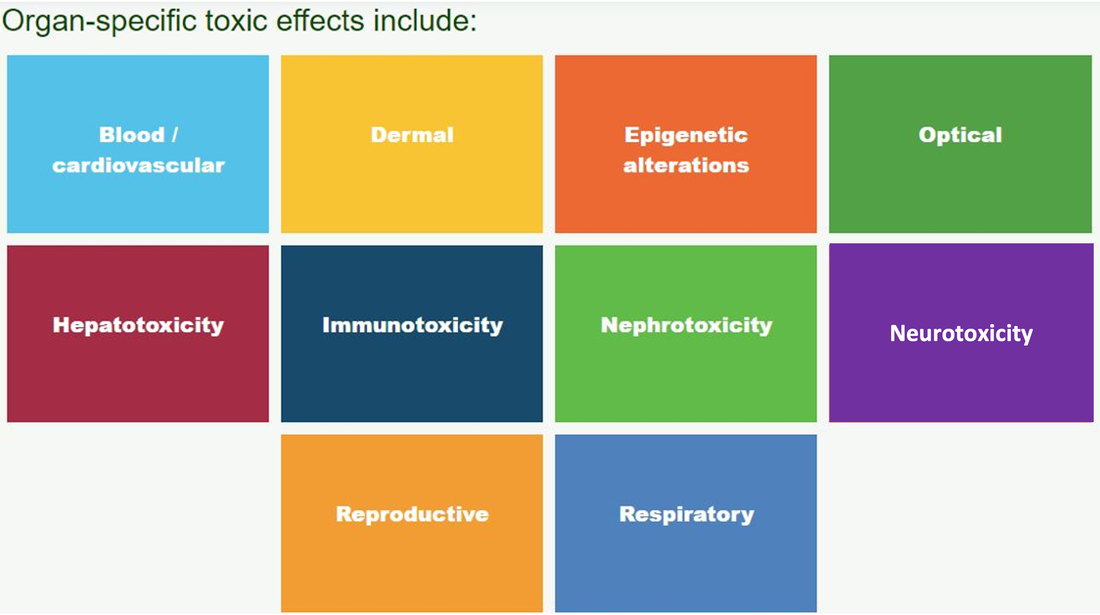Section 3: Key Points
What We've Covered
This section made the following main points:
What We've Covered
This section made the following main points:
- Toxicity can result from adverse cellular, biochemical, or macromolecular changes.
- Some chemicals affect only specific target organs; others can damage any cell or tissue they contact.
- Chemicals can affect organisms by multiple mechanisms and at the molecular level, leading to modern approaches such as Adverse Outcome Pathways (AOPs) and Mechanism of Actions (MOAs).
- Several factors influence toxicity, including form and innate chemical activity, dosage, exposure route, species, life stage, gender, absorption ability, metabolism, distribution, excretion, health and nutritional status, the presence of other chemicals, and circadian rhythms.
- Systemic toxic effects, which can occur at multiple sites, include:
- Acute toxicity, which occurs almost immediately (seconds/minutes) after a single dose or series of doses within 24 hours.
- Subchronic toxicity, which results from repeated exposure for several weeks or months.
- Chronic toxicity, which damages specific organ systems over the course of many months or years.
- Carcinogenicity, or abnormal cell growth and differentiation that can lead to cancer.
- Developmental toxicity, which adversely affects the developing embryo or fetus.
- Genetic toxicity, caused by damage to DNA and altered genetic expressions.
- Organ specific toxic effects include:
- Blood/cardiovascular toxicity, affecting the blood, bone marrow, or heart.
- Dermal toxicity, impacting the skin.
- Epigenetic alterations, changing genetic programming.
- Optical toxicity, adversely affecting the eyes.
- Hepatotoxicity, impacting the liver, bile duct, or gall bladder.
- Immunotoxicity, affecting the immune system.
- Nephrotoxicity, affecting the kidneys.
- Neurotoxicity, impacting the central nervous system.
- Reproductive toxicity, damaging the reproductive system.
- Respiratory toxicity, affecting the respiratory system.



